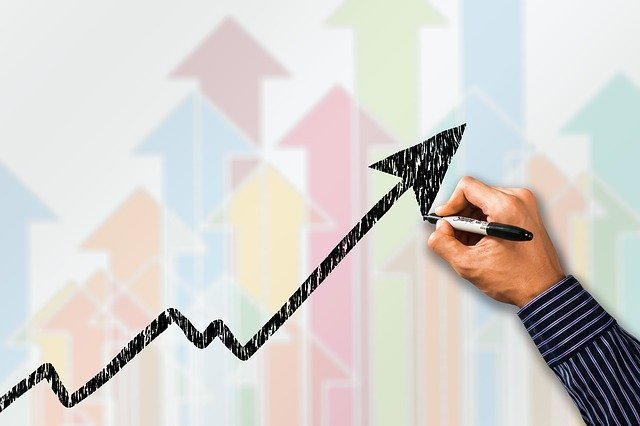
A lot of changes have been occurring in recent years. One of the big changes is about using AI in different industries and how we are getting increasingly familiar with AI. The aspect we’re going to look at is using AI for business forecasts to increase value.
Customer demand is at an all-time high
Today’s business world is operated based on customer demand. Unfortunately, the patterns of customer demand are changing more rapidly than ever before. This is a reason why it is becoming increasingly hard to forecast business operations accurately. Could using AI for business forecasts help with predicting customer demands?
In many businesses, people and departments are trying to estimate future events and try to plan ahead of time. By being prepared, people try to do smarter management and save costs for themselves, departments, and businesses as a whole.
Using AI for business forecasts
The purpose of forecasting is to reduce uncertain situations and to provide future standards for actual performance. AI has recently emerged as the technique that is being used to improve the performance of forecasting accuracy. Therefore making significant contributions to improving business outcomes and processes.
Organisations in different industries develop a variety of ways to forecast with the aim to support team members who are in the position of planning and decision makings.
We might be able to perform forecasting with qualitative analysis, quantitative analysis, or a combination.
In general, quantitative analysis is reflected as a more objective analysis. However, qualitative forecasting is more for managerial analysis with which managers or decision-makers can judge.
AI is more of a quantitative analysis approach since it is learning information based on data trained and come up with predictions.
AI algorithms that can be used for business forecasts
Here is some common AI algorithm that performs the forecasting.
- Logistic Regression
- Random Forest
- K-nearest Neighbors
- XGBoost
- Neural Network
Let’s go deeper into each AI learning algorithm to get a better understanding of how using AI for business forecasts could help improve customer demand predictions.
Logistic Regression
In statistics, the logistic model is used for getting the probability of a certain class or event such as “yes” or “no”/”obtain” or “lose”. This can be extended to determination classes or events.
Logistic Regression can be applied in many different fields. It can be used to predict mortality in disease. For example, we can predict the number of death by coronavirus pandemics based on observed characteristics of the patient (sex, age, blood, body, heart rate).
Another example is to find the likelihood of customers. We can predict the likelihood of buying or spending based on their behavioral state.
This technique can be used in various industries, especially when trying to predict the probability of events of a given process, system, or product. It is also used for marketing applications such as prediction of customer’s willingness to make a purchase, also known as buyers’ intent.
Logistic regression can be different formula. It can be ordinal, multinomial, or binomial. Binary logistic regression observes the outcome for a dependent variable that has only two possible types, “0” or “1”.
Let’s use an example to give a better understanding.
Let’s use the example that we’re trying to find out how many people with coronavirus are dying compared to how many are living. When looking at the cases, we can label “0” as being ‘survived’ and “1” as being ‘died’. This will give us an indication of trends in certain areas and let the local healthcare representatives, hospitals, government, and any other involved parties know of the trends and data.
However, multinomial logistic regression can be three or more possible types. The ordinal logistic regression deals with dependent ordered variables allowing the data to become more complex and applied to more variables. This might be more suitable for a business decision with more variables on a trend.
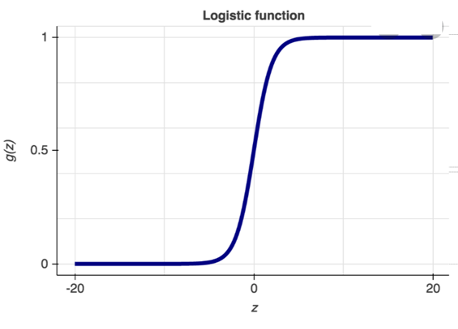
Random Forest
Random Forests are an ensemble learning method of machine learning techniques. Classification, Regression, and other tasks can be solved with this method. Random Forest can be operated by constructing a multitude of decision trees at training time and output the class that is a mode of classes.
This Random Forest is using a bagging algorithm for trees.
They use a modified tree learning algorithm that selects at each candidate split in the learning process, a random subset of the features.
This method is also called “feature bagging”.
The reason for doing this is to correlate the trees in the ordinary bootstrap sample. If some features are strong predictors for the response variable, these features will be selected out of the trees.
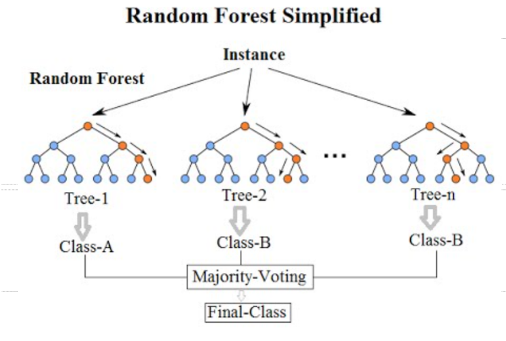
K-nearest neighbors
In pattern recognition, the k-nearest neighbors’ algorithm (k-NN) is a non-parametric method used in classification and regression. The input consists of the k closest training examples in the feature space.
If K-nearest neighbors are used as classification, the output is a class membership. An object is classified by a plurality vote of its neighbors, with the object being assigned to the class most common among its k nearest neighbors.
If K-nearest neighbors is used as regression, the output is the property value for the object. This value is the average of the values of k nearest neighbors.
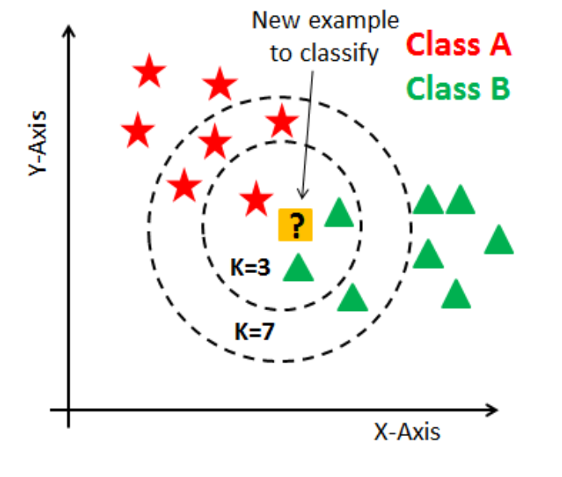
Fig.3 K-Nearest Neighbors
XGBoost
XGboost means for eXtreme Gradient Boosting and is developed on the framework of gradient boosting. XGBoost was developed to increase computational speed and optimize model performance.
XGboost is a special case of boosting. Boosting is the sequential ensemble method that creates a sequence of models that attempt to correct the mistakes of the models before them in the sequence. The first model is built on training data, the second model improves the first model, the third model improves the second, etc.
From gradient boosting while combining the model, the loss function is minimized using gradient descent. Technically a loss function can be said as an error. The loss function is between the predicted value and the actual value.
Of course, the fewer errors, the better the model becomes.
The reason why XGBoost is so good is XGBoost is written in C++ so that people can be really quick in computation. The great thing is that it can easily be imported in python.
While machine learning algorithms have support for tuning and can work with external programs, XGBoost has built-in parameters for regularization and cross-validation to keep bias and variance to be minimal. This advantage can lead to faster implementation and quicker results.
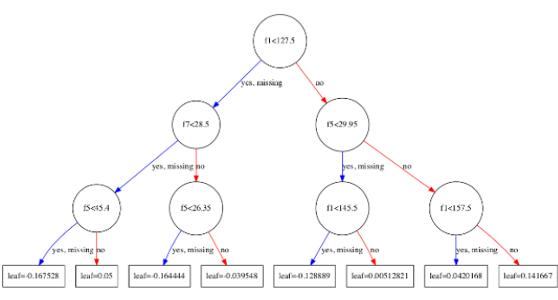
Neural Network
A neural network is computing systems inspired by human brains. The system is set to ‘learn’ to perform tasks usually without being programmed with task-specific rules.
For example, in image recognition which is a part of pattern recognition, identifying images of cats can be performed. The images contain the cats by analyzing example images that were manually labeled as “cat” or “no cat” and using the results to machine learn this and identify cats in the new images. They can do this without any previous knowledge of cats. With new data, they can automatically generate characteristics from the examples that they learned from training data.
Now you can think of how it might be possible to use this technology when using AI for business forecasts. You could apply the technique to spot new trends in what people are wearing, what applications they are using, or identify when someone is visiting the same location.
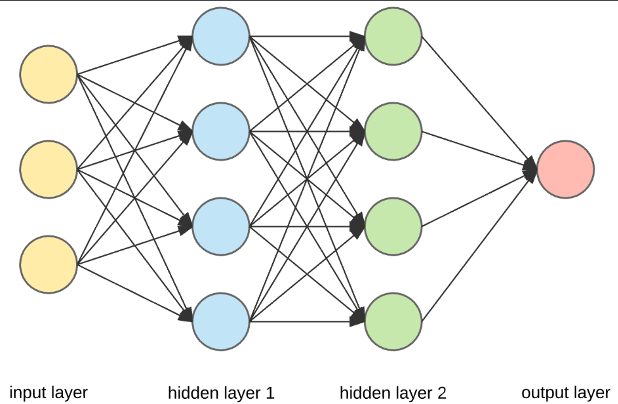
What do you think of AI for business forecasts?
We have walked through techniques that could be used. AI for business forecasts can be a handy way to use the tool especially with the techniques getting increasingly advanced as time passes.
AI technologies are helping businesses moving faster in a more automated manner. Undoubtedly, AI is the key to be successful in business in the future. However, to achieve good results, I think it is very important to keep learning new AI techniques up to date so that we know what techniques can be applied in the future.
What techniques do you use in your day-to-day? I’d love to know how you’re using AI techniques and algorithms or what you think about the use of the above techniques in a particular business or social scenario. So make sure you leave a comment so we can get more ideas on how to use the powerful technology.

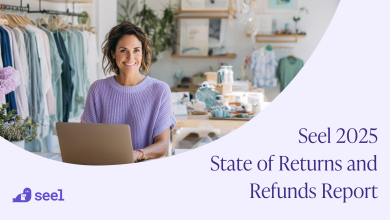
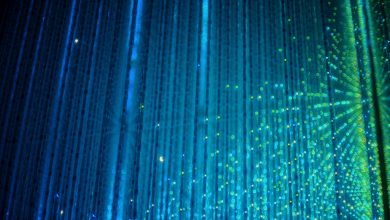

One Comment